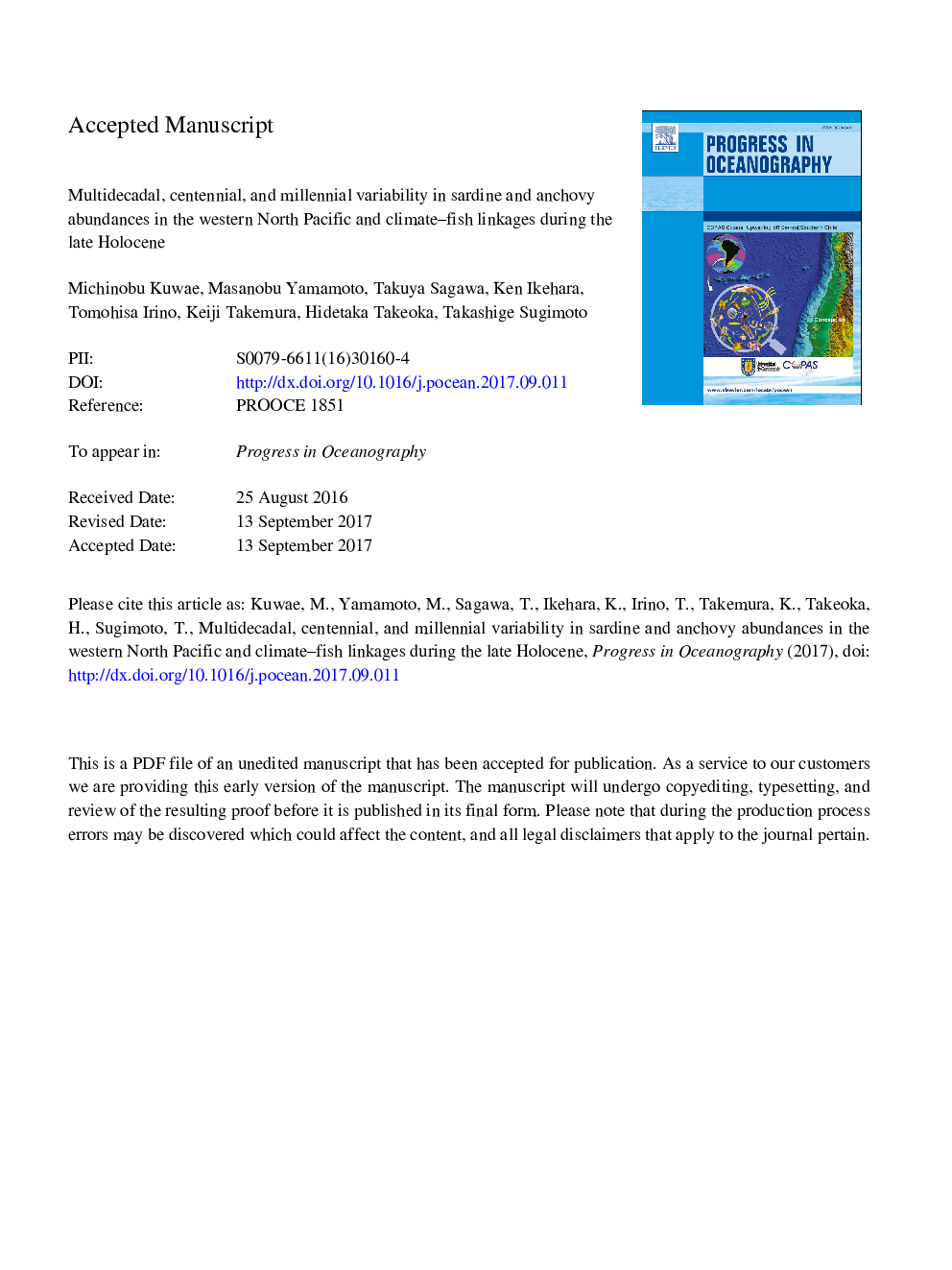| Article ID | Journal | Published Year | Pages | File Type |
|---|---|---|---|---|
| 5766465 | Progress in Oceanography | 2017 | 67 Pages |
Abstract
Paleorecords of pelagic fish abundance could better define the nature of fishery productivity dynamics and help understand responses of pelagic fish stocks to long-term climate changes. We report a high-resolution record of sardine and anchovy scale deposition rates (SDRs) from Beppu Bay, Southwest Japan, showing multidecadal and centennial variability in the abundance of Japanese sardine and Japanese anchovy during the last 2850Â years. Variations in the sardine SDR showed periodicities at â¼50, â¼100, and â¼300Â yr, while variations in the anchovy SDR showed periodicities at â¼30 and â¼260Â yr. Comparisons between and correlation analyses of the time series of the sardine and anchovy SDRs demonstrate that there is not a consistent out-of-phase relationship during the last 2850Â years. This indicates that the multidecadal alternations in the sardine and anchovy populations commonly seen in the 20th century did not necessarily occur during earlier periods. The Japanese sardine SDR record shows a long-term decreasing trend in the amplitudes of the multidecadal to centennial fluctuations. This decreasing trend may have resulted from an increasing trend in the winter sea surface temperature in the western North Pacific. The multicentennial variability in sardine abundance during the last millennium is consistent with the variabilities in the abnormal snow index in East Asia and the American tree ring-based Pacific Decadal Oscillation index, suggesting a basin-wide or regional climate-marine ecosystem linkage.
Keywords
Related Topics
Physical Sciences and Engineering
Earth and Planetary Sciences
Geology
Authors
Michinobu Kuwae, Masanobu Yamamoto, Takuya Sagawa, Ken Ikehara, Tomohisa Irino, Keiji Takemura, Hidetaka Takeoka, Takashige Sugimoto,
